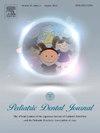托儿设施中险些窒息事件的原因及预防孩子的因素
IF 0.8
Q4 DENTISTRY, ORAL SURGERY & MEDICINE
引用次数: 0
摘要
本研究旨在调查儿童保育机构中险些窒息事件的发生率及其与儿童饮食行为和发育状况的关系,以制定预防策略。方法采用网络调查方法,对市政设施、社会福利公司和全国托儿中心理事会的托儿工作者进行调查。在1661名受访者中,有1648名同意参与分析。我们收集了他们的工作地点、社会人口特征、呛死未遂事件的原因和预防以及所涉及儿童的身体状况等数据。结果与差点窒息事件最相关的坐姿行为是将食物塞进嘴里、咬得太大、吃饭时咀嚼不足、不咀嚼就吞下食物以及吃得太快。有生长相关问题的儿童,有发育迟缓的儿童,或者那些给照顾者带来焦虑的儿童,更有可能表现出这些危险的饮食行为。结论:问题饮食行为与儿童的生长发育和照顾者焦虑密切相关;因此,仔细观察和支持对于防止窒息事件至关重要。本文章由计算机程序翻译,如有差异,请以英文原文为准。
Causes and prevention of near-miss choking events in childcare facilities 1. child factors
Introduction
This study investigates the incidence of near-miss choking events in childcare facilities and their association with children's eating behaviors and developmental status to develop prevention strategies.
Methods
A web-based survey was conducted among childcare workers employed at municipal facilities, social welfare corporations, and the National Council of Childcare Centers. Of the 1661 respondents, 1648 consenting participants were included in the analysis. We collected data on their places of work, sociodemographic characteristics, causes and prevention of choking near-miss incidents, and physical conditions of the children involved.
Results
Eating behaviors most frequently associated with near-miss choking events were stuffing food into the mouth, large bite size, insufficient chewing during meals, swallowing food without chewing, and fast eating. Children with growth-related concerns, those with developmental delays, or those who caused anxiety for caregivers were significantly more likely to exhibit these risky eating behaviors.
Conclusions
Problematic eating behaviors are strongly linked to children's growth, development, and caregiver anxiety; therefore, careful observation and support are essential to prevent choking events.
求助全文
通过发布文献求助,成功后即可免费获取论文全文。
去求助
来源期刊

Pediatric Dental Journal
DENTISTRY, ORAL SURGERY & MEDICINE-
CiteScore
1.40
自引率
0.00%
发文量
24
审稿时长
26 days
 求助内容:
求助内容: 应助结果提醒方式:
应助结果提醒方式:


